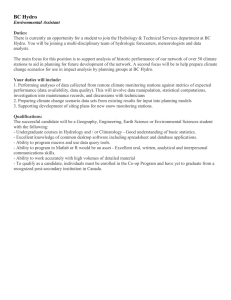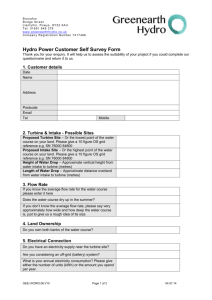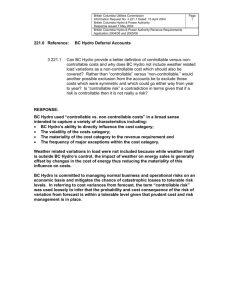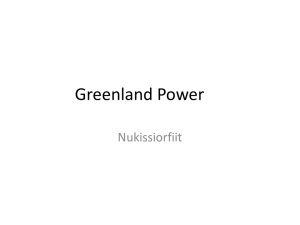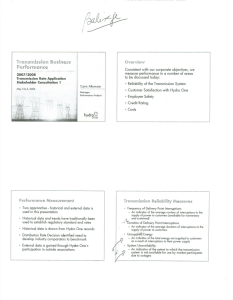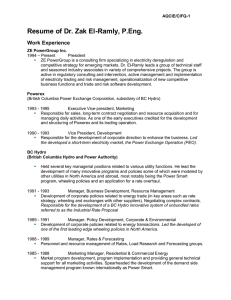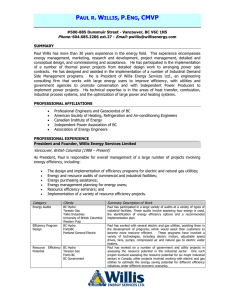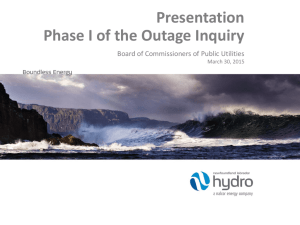Meteorological/Hydrological Value Chains
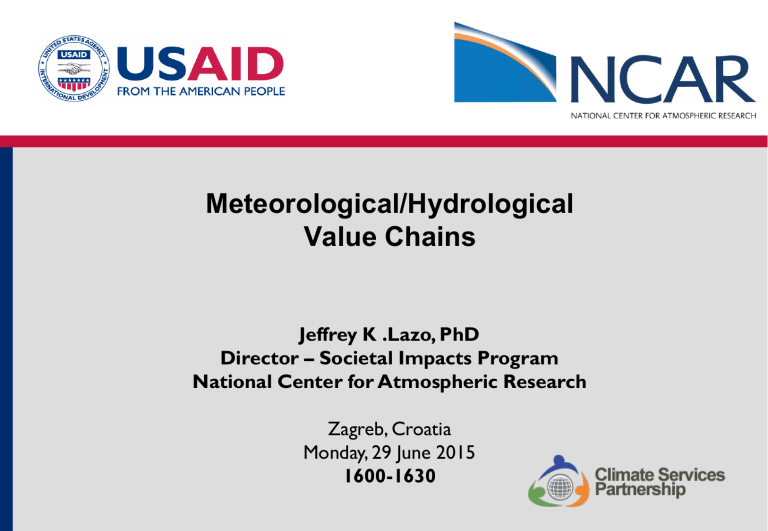
Meteorological/Hydrological
Value Chains
Jeffrey K .Lazo, PhD
Director – Societal Impacts Program
National Center for Atmospheric Research
Zagreb, Croatia
Monday, 29 June 2015
1600-1630
NMHS Mission and Functions
UK Met Office (2013)
• Protecting lives; Improving quality-of-life and well-being;
Enabling UK economic growth and international competitiveness.
Kenya Meteorological Service (2013)
• Improved Quality of Life … Spur Socio-Economic Growth and
Development
National Meteorological Service (NMS) of Seychelles (n.d.)
•
The provision of weather forecasts, warnings, recommendations of response and related information for the general public in a timely and usable manner, in order to ensure the safety of life and property.
NMHS Service Production and Delivery
Service Production and Delivery
• Necessary for economists to have some basic understanding of the information process to be able to
“value” information
• Whole of services versus specific products or services
– All activities creating all products and services to all users and decision makers
– Specific step in the process, hydro/met event, end-user, …
• Need to understand process and context for specific activities with the process as well as specific products or services including:
– Relevant spatial and temporal scales
– Competing or complementary production activities
Met/hydro service value chain
Service production and delivery embedded within larger process of creating value
Met/hydro service value chain
NMHS Service Production and Delivery
Met/hydro service value chain
• Private sector
• Media – television, radio, internet, newspaper …
• Nontraditional “channels”
Met/hydro service value chain
“End-users”
• Economic sector / individual firms
• General public / specific populations
• Public agencies
Met/hydro service value chain
Decision making
• constraints
• resources
• psychology of decision making - affect / cognition
Met/hydro service value chain
Outcomes
• Dependent on weather outcome, information, decisions made, resources and constraints of decision context
• personal well-being – death/injury/illness/inconvenience
• “economic losses” – lost output, wages, taxes
Met/hydro service value chain
Valuation
• Benefits of improved decisions with information
• Costs of creating, communicating, using the information o e.g., cost of evacuation
Examples of Value Chains
1. Illustrate the role of different social sciences in understanding the value chain
2. Articulating the value of comprehensive research all along the value chain – Example from THORPEX
3. Conceptualizing the value chain of improved forecasting for utility scale solar power generation
4. Identifying gaps in the forecast and warning process to improve communication
Weather Information Value Chain
Weather
National Hydro-Meteorological
Services (e.g., NWS)
Emergency Managers /
Media /
Broadcasters
Vendors / Private Sector
Meteorology
Public Officials
Economic Sectors /
Stakeholders
Monitoring
Observation
Modeling
Forecasting
Dissemination
Communication
Perception
Interpretation
Information Use
/ Decision
Making
Economic
Values
Value Chain – another perspective …
Basics – what should be valued?
Morss, Lazo, Brown, Brooks, Ganderton, & Mills – BAMS 2008
Forecasting for Utility Scale Solar
Hurricane information appraisal and response model (Part 1)
Hurricane information appraisal and response model (Part 1)
Example: Flash Flood Warning Value Chain
Weather
Monitoring
Observation
Modeling
Forecasting
Dissemination
Communication
Perception
Interpretation
Information Use
/ Decision
Making
Economic
Values
Large rain system moving slowly over mountains west of
Boulder, CO
Doppler
Radar / Rain
Gauges /
Soil
Moisture
Data
River Flow
Modeling /
Flash Flood
Warning
Issued
Emergency
Broadcast
System /
Television /
Radio /
Reverse 911
/ FF
Warning
Siren
Driving down
Boulder
Canyon …
Individual hears siren
Is it a drill?
Turns on radio and hears emergency message
Parks car and climbs to higher ground
Value of a life saved
